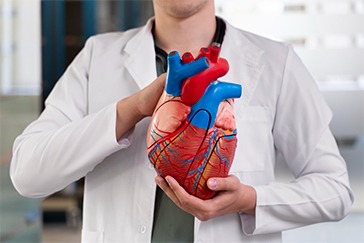 Book Appt.
Book Appt.
 Call Now
Call Now


Carotid Artery Disease: Causes, Symptoms, Diagnosis, and Treatment
Carotid Artery Disease (CAD) is a common vascular condition that affects the carotid arteries, which are responsible for supplying oxygen-rich blood to the brain. At SHALBY Sanar International Hospital, we prioritize patient education and awareness about CAD to promote early detection and effective treatment. In this article, we will explore the causes, symptoms, diagnosis, and treatment options for Carotid Artery Disease.
Causes of Carotid Artery Disease
Carotid Artery Disease typically results from atherosclerosis, a process in which fatty deposits, cholesterol, and other substances accumulate in the carotid arteries, leading to the narrowing or blockage of these vital blood vessels. Key causes and risk factors include:
Symptoms of Carotid Artery Disease
CAD often progresses without noticeable symptoms, leading to the term "silent CAD." However, when symptoms do occur, they may include:
Diagnosis of Carotid Artery Disease
Treatment Options for Carotid Artery Disease
SHALBY Sanar International Hospital offers various treatment options for CAD, depending on the severity and location of the disease:
Conclusion
Carotid Artery Disease is a significant health concern that requires early detection and appropriate treatment. SHALBY Sanar International Hospital is dedicated to providing comprehensive care for CAD patients, from diagnosis through to treatment and rehabilitation. By raising awareness and offering advanced treatments, we aim to improve the quality of life for individuals affected by CAD and reduce its impact on our community. Early detection, personalized treatment plans, and a commitment to patient well-being are vital for effectively managing CAD and promoting vascular health.
SHALBY Sanar International Hospitals provides extensive medical procedures backed up with our state-of-the-art technology and a team of highly qualified & experienced clinical experts.

Life-Changing TAVR Success Story | Dr. D.K. Jhamb | SHALBY Sanar International Hospitals

Timely Angiography Procedure Saves life of Iraqi Patient.

Rajiv Makhni, Managing Editor of NDTV, Shares His Experience at SHALBY Sanar International Hospitals

A successful treatment procedure helped Ms. Suri get over breathlessness
Our doctors pen down their research findings and experiences from time to time. Their words provide deep insight into the latest techniques, technologies and other advancements in healthcare. It provides expert answers to all kinds of health questions for real-life issues.
VIEW ALL




Since the day of its foundation, SHALBY Sanar International Hospitals is committed to provide comprehensive healthcare services. It regularly organizes awareness programs in its premises and encourages outdoor healthcare activities and camps with an intent to put focus on preventive healthcare.
VIEW ALL